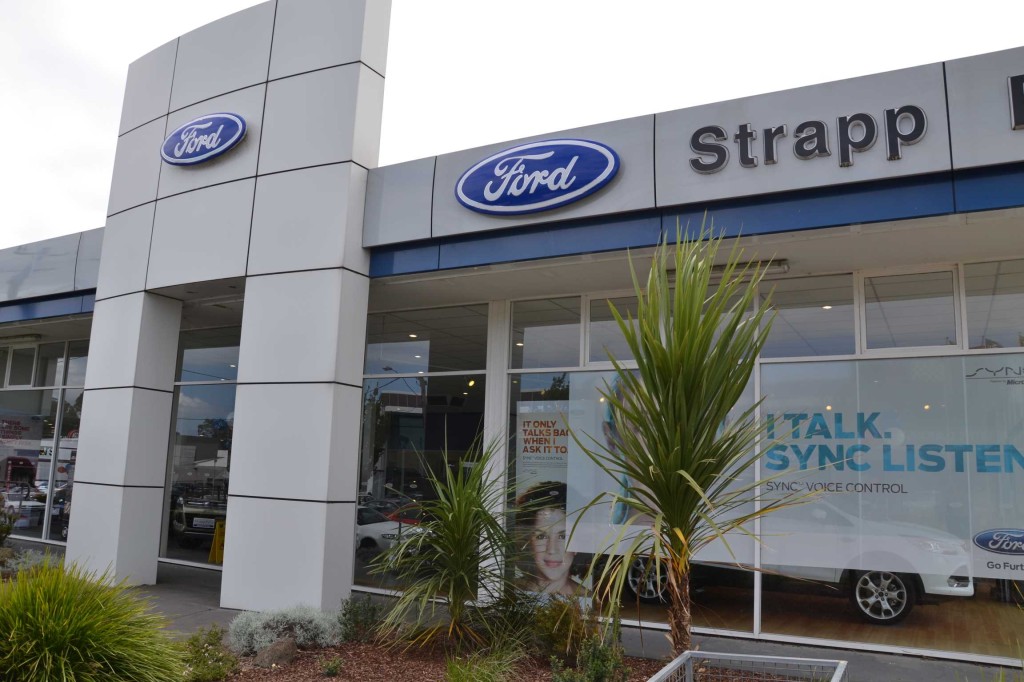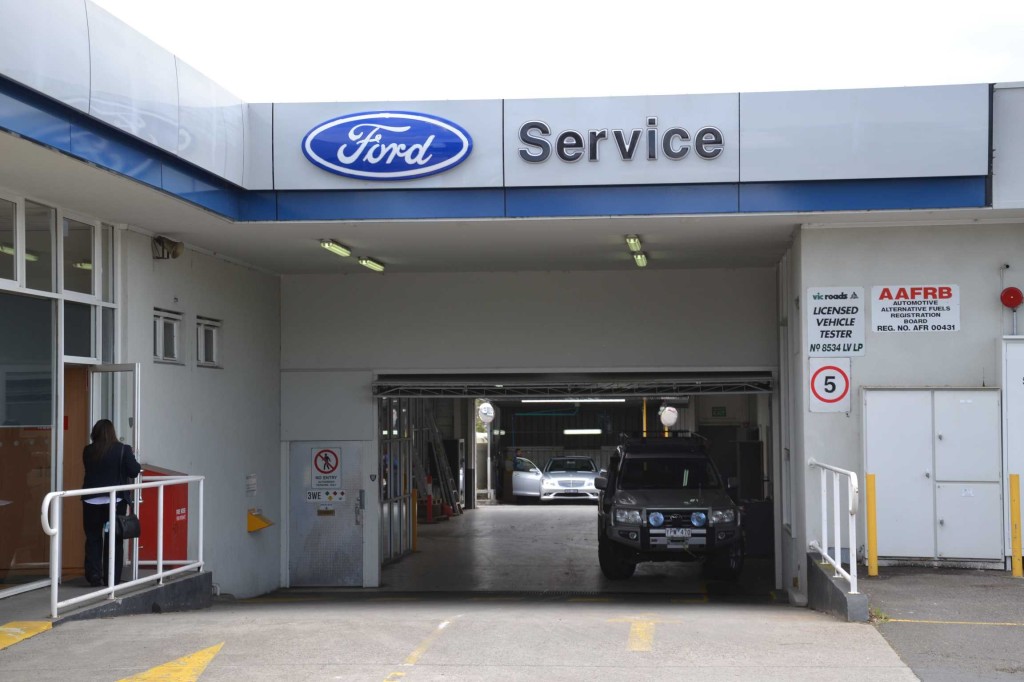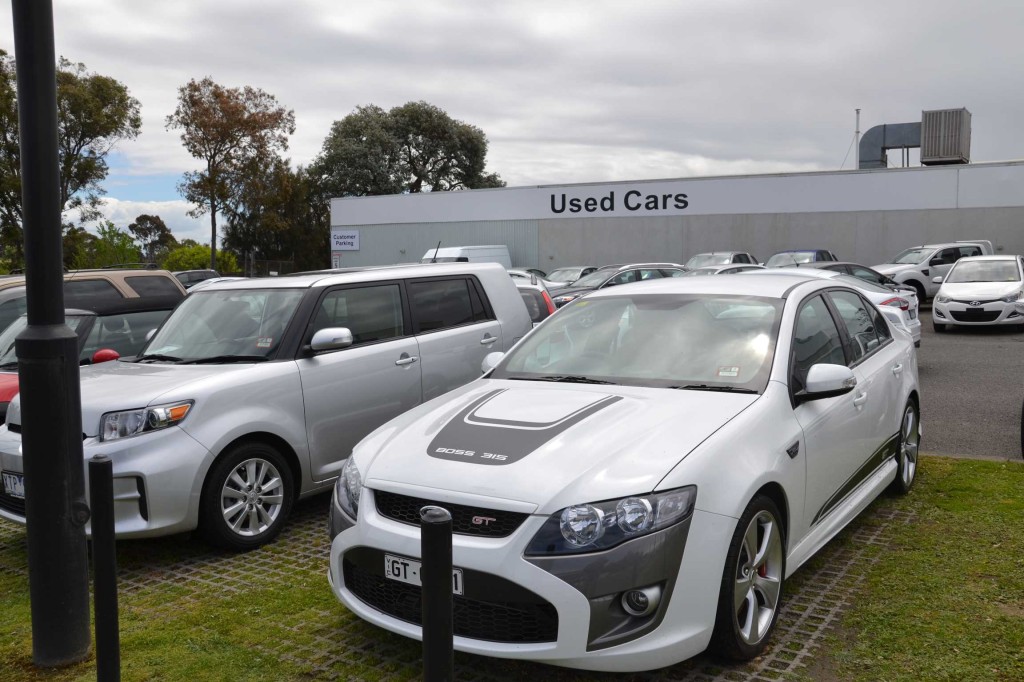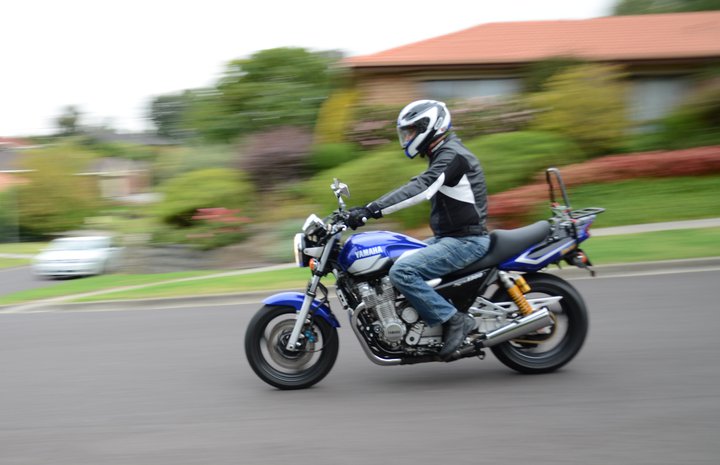Learn English while learning about daily life in Australia, with Rob McCormack
Podcast Number 26 – Owning a Car in Australia
Hi,
Getting around in Australia is important. It’s a big place after all. In previous podcasts I have talked about using Melbourne’s trains and trams. But most people in Australia use private vehicles, such as cars or motorcycles. The fact is, Governments over the years have spent more money on roads than they have on public transport like trains or trams. That’s because Australians like to have the freedom of driving their own vehicle.
In 2011, 50% of Australian households had 2 or more cars. That shows you how much we love our cars. In 2011, nearly 66% of all working Australians went to work in a car. Only about 10% took public transport such as a train, a tram, a bus or a ferry to get to work. So you can see, we really do love our cars here in Australia.
So how much does it cost to own a car in Australia? Well, it costs quite a bit. Let’s talk about, say, a small four cylinder car such as a Ford Focus. Let’s assume that you bought it new.
The RACV, our local motoring organization here in Victoria, has estimated how much it would cost to buy and run the Ford Focus over a 5 year period. The cost breakdown goes like this:
- The cost of the vehicle is around $22,000.
- The on-road costs are around $3,000. These costs are paid in addition to the price when you buy the car.
The on-road costs have four parts. The first is the dealer delivery fee. The dealer who sells you the car charges you a fee to prepare the car for sale. This covers things like cleaning the car and ensuring everything is working correctly. The dealer delivery fee can be as high as $1,500. Usually, people buying a new car try to negotiate with the dealer for a smaller delivery fee.
The second part of the on-road cost is the government stamp duty. This is a duty or tax paid to the State Government. In Victoria, the stamp duty is 3% of the car’s price for cars costing up to $60,300 and 5% for cars costing more than $60,300. For example, the stamp duty on the new Ford Focus would be around $750.
The third part of the on-road cost is the cost of the number plates, which is $32.80.
The registration is the final part of the on-road cost and that would be $712 for a Ford Focus.
So that’s all up about $3,000 for the on-road costs. So actually, the price of our new car is not $22,000, it’s around $25,000. - Loan payment interest is about $1,000 every year. That’s because most people get a bank loan to pay for the car and you must pay interest at around 10% per annum.
- Costs for registration, third party insurance and your driver’s licence are around $2,000. This is an ongoing cost and must be paid every year.
- Running costs are around $2,500 every year. This includes the cost of fuel, new tyres every 3 or 4 years and the cost of servicing the car regularly to make sure it keeps running well. Most Australians travel around 15,000 km per year so keeping the car in good condition is important, otherwise it will soon break down and cost you even more money.
All of this adds up to quite a bit as you can see. The RACV estimates that these costs, together with the costs of depreciation, equal about 55c for every kilometre that you drive, or around $160 every week. That’s a lot of train fares and bus fares. But I guess people just love the freedom of having their own car. You can leave when you want, go just about anywhere and you will be warm, dry and safe. In addition, you can use your car on weekends and on holidays to visit places and do things that you love to do. I must admit that I have owned cars since I was 18 years old and I think I’ll always have a car.
(For more information about the costs of running a car, see http://www.racv.com.au/wps/wcm/connect/racv/Internet/Primary/my+car/advice+_+information/vehicle+operating+costs).
Of course, many people don’t buy new cars. They buy second hand cars.
This can cut the cost down quite a bit. For example, you can buy a good quality Ford Focus 2008 model, with say 70,000 km on the odometer, for around $10,000, a saving of about $12,000. That cuts the cost of the interest you must pay, reduces the stamp duty and removes the dealer delivery fee. But all the other costs stay the same.
I also own a motorbike. One of the things I like about it is the small amount of petrol it uses. It does have a large motor of 1.3 litres, but it still travels around 17 kilometres on every litre of fuel. My car goes about half as far on a litre of fuel. So my motorcycle saves me a lot on my fuel costs. That’s one reason why I ride my motorcycle everywhere I can. The other reason, and the main reason, is that I just enjoy riding it so much, even if it can get a little wet in the rain. But I admit, not even the rain stops me riding my motorcycle. Maybe that’s a topic for another podcast.
If you have a question or a comment to make, please leave it by clicking the comments link at the top of this story. You can leave your comment in English or in any language and I will translate it. Or, you can send me an email at rob@slowenglish.info. I would love to hear from you. Tell me where you live, a little bit about yourself and what you think of my Slow English podcast. Perhaps you could suggest a topic for a future podcast. If you would like to take a short quiz to see if you have understood this podcast, you will also find it on my website. Goodbye until next time.
Rob
Podcast 26 Quiz - Did you understand the podcast?
You can do the quiz as many times as you like. Your individual scores are not recorded.
Vocabulary
admit = to agree
break down = when you split something into its parts
cylinder = a round tube. The engine of a car has cylinders to make it run
dealer = a company which sells cars
delivery = when something you have bought is given to you
depreciation = a measure of how much a car or other asset is losing its value over time, as it wears out
duty = a fee you pay to the government
ensuring = to make sure it happens
estimated = to guess
ferry = a boat which carries people from one place to another for a fee. Usually over a short distance
freedom = when you can do what you want to
fuel = used to make an engine go. Also called petrol (in Australia/UK) or gas (in US)
good condition = when something is not broken and does not need to be fixed
household = a family living in one house
in addition = as well as
interest = the fee that you pay in order to have a loan from a bank
licence = a licence shows that you are allowed to drive a car
loan = when a bank gives you some money so that you can buy something. You must pay it back, together with a fee
motorbike = motorcycle
motoring organization = a company formed by motorists, in order to improve things for motorists
negotiate = to talk about what price you will pay, so that you can get a lower price
number plates = small strips of metal which shows the registration number of your car. They are put on the front and back of your car
odometer = the part of the car which tells you how far you have travelled
per annum = per year
petrol = the liquid used to make an engine work. Also called gas (in the US). Also called fuel
previous = the one before
private = when something belongs to you. It is yours
public transport = a train, bus or tram. Anyone can use it to get from one place to another, for a fee
quality = how good or bad something is
quite a bit = a large amount
RACV = Royal Automobile Club of Victoria
reduces = makes smaller
second hand = when something has been owned and used by another person before. Also called ‘Used’
servicing = to replace those things on your car which are worn out, like oil and other parts
tax = a fee you pay to the government
third party insurance = if you cause an accident, this insurance will pay for the damage you cause
tyres = used on the wheels of your car to grip the road
vehicles = something which can carry you from one place to another. For example, a car, bus or truck





January 27, 2017 at 6:37 am
Hi,
I have a car. But I have been thinking about the cost of being a driver for a lot. I had also estimated that it costs me about 10 euros a day, so it´s more or less the same cost that you have calculated. And I add other advantages: forgetting the stress of driving in the city centre, looking for a parking place… So I have decided that when my car breaks down with a serious problem, I won´t have it mended, but I will start to put 10 euros in a box every day, so, when I need to hire a car for a holiday or to pay a bus or a train ticket I can take the money that it costs and to see if it is worth living without a car.
January 28, 2017 at 7:34 am
Hi Ignacio,
Yes, 10 Euros a day is sounds about right. Hiring a car these days is a good option, especially for holidays. Thanks for your interesting comment.
Have a great day.
Rob
October 9, 2016 at 5:20 pm
Thank so much you for the fine work that you do making these great podcasts for us about daily life in Australia. I find them very useful. I come here almost every week to listen to them. I also download and upload them to my portable music player so that I can listen to them on my way to work, while I’m out shopping and when I’m at home doing dishes and things like that. Keep up the good work! Thank you once again.
October 10, 2016 at 12:00 am
Hi Michael,
Many thanks for your kind message. It’s great to think that you listen to my podcasts and find them useful. Your English seems to be very good. Well done!
Have a great day.
Rob
May 26, 2016 at 11:14 pm
Hello
May 27, 2016 at 10:08 am
Hi Luis. Glad you came to my podcast site.
Have a great day.
Cheers,
Rob